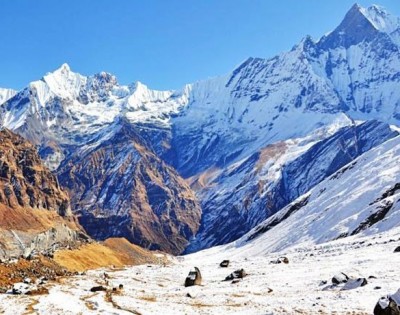Shivaratri Festival in Nepal: A Celebration of Devotion and Tradition
Every year, Nepal witnesses a grand celebration of Maha Shivaratri, a Hindu festival dedicated to Lord Shiva, the god of destruction and transformation. One of the most iconic locations for this festival is the Pashupatinath Temple in Kathmandu, a UNESCO World Heritage site and one of the holiest shrines for Hindus worldwide.
This year, on February 27, 2025, tens of thousands of devotees gathered at the temple, participating in rituals, prayers, and traditional practices, including the consumption of marijuana, a substance closely associated with Lord Shiva in Hindu mythology.
The Significance of Maha Shivaratri
Maha Shivaratri, meaning "The Great Night of Shiva," is observed on the 14th night of the lunar month of Phalguna (February–March). Devotees believe that on this night, Lord Shiva performed the cosmic dance of creation, preservation, and destruction. It is also believed to be the night when Shiva and Goddess Parvati were married.
On this auspicious occasion, pilgrims from Nepal and India travel to Pashupatinath Temple, seeking blessings and offering prayers. The temple is illuminated with lights and filled with the chants of "Om Namah Shivaya," creating a mystical atmosphere of devotion and spirituality.
Why is Marijuana Associated with Lord Shiva?
One of the most unique aspects of Maha Shivaratri in Nepal is the open consumption of marijuana (cannabis) by devotees. According to Hindu mythology, Lord Shiva is known as the "Lord of Bhang" and is often depicted consuming cannabis to aid his meditation and detachment from worldly affairs.
During Shivaratri, sadhus (Hindu ascetics) and devotees smoke cannabis or drink bhang (a traditional cannabis-infused drink) as part of the religious practice. While cannabis is generally illegal in Nepal, the government permits its use on Shivaratri within the premises of Pashupatinath Temple.
The Atmosphere at Pashupatinath Temple
The festival at Pashupatinath Temple is a vibrant mix of devotion, music, and cultural expressions:
- Sadhus from India and Nepal with ash-covered bodies, dreadlocks, and saffron robes gather at the temple, meditating and blessing devotees.
- Bonfires are lit, symbolizing the destruction of ignorance and negativity.
- Hymns and bhajans (devotional songs) echo through the temple complex, creating a deeply spiritual ambiance.
- Thousands of pilgrims offer milk, water, fruits, and flowers to Lord Shiva’s sacred lingam (symbolic representation).
- Street vendors sell prasad (holy offerings), incense, rudraksha beads, and religious artifacts, adding to the festive spirit.
Despite the huge crowd, the event is well-organized with security personnel and volunteers ensuring a smooth flow of devotees.
Shivaratri Beyond Religion: A Tourist Attraction
Maha Shivaratri at Pashupatinath Temple is not just a religious event; it has also become a major attraction for tourists. Foreign travelers and photographers visit Nepal during this time to witness the unique blend of faith, tradition, and cultural mysticism.
The festival provides an opportunity to experience Nepal’s spiritual side, interact with sadhus, and witness a centuries-old tradition in one of the world’s most sacred places.
Final Thoughts
Maha Shivaratri in Nepal is a profound experience of devotion, spirituality, and age-old traditions. Whether you are a pilgrim seeking blessings, a traveler exploring Nepal’s rich culture, or a photographer capturing the vibrancy of the festival, Shivaratri at Pashupatinath Temple is a sight to behold.
Would you like to experience this magical night of prayers, rituals, and divine energy? Plan your visit to Nepal during Maha Shivaratri and witness this extraordinary celebration firsthand!

